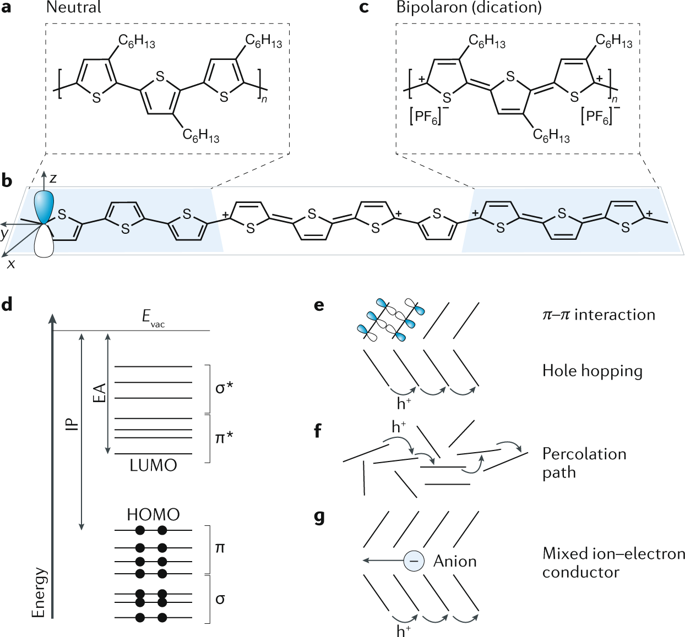Nature Reviews Materials ( IF 79.8 ) Pub Date : 2019-07-25 , DOI: 10.1038/s41578-019-0127-y Mats Fahlman , Simone Fabiano , Viktor Gueskine , Daniel Simon , Magnus Berggren , Xavier Crispin

|
Undoped, conjugated, organic molecules and polymers possess properties of semiconductors, including the electronic structure and charge transport, which can be readily tuned by chemical design. Moreover, organic semiconductors (OSs) can be n-doped or p-doped to become organic conductors and can exhibit mixed electronic and ionic conductivity. Compared with inorganic semiconductors and metals, organic (semi)conductors possess a unique feature: no insulating oxide forms on their surface when exposed to air. Thus, OSs form clean interfaces with many materials, including metals and other OSs. OS–metal and OS–OS interfaces have been intensely investigated over the past 30 years, from which a consistent theoretical description has emerged. Since the 2000s, increased attention has been paid to interfaces in organic electronics that involve dielectrics, electrolytes, ferroelectrics and even biological organisms. In this Review, we consider the central role of these interfaces in the function of organic electronic devices and discuss how the physico-chemical properties of the interfaces govern the interfacial transport of light, excitons, electrons and ions, as well as the transduction of electrons into the molecular language of cells.
中文翻译:

有机电子学中的接口
未掺杂,共轭的有机分子和聚合物具有半导体的特性,包括电子结构和电荷传输,可以通过化学设计容易地对其进行调节。此外,有机半导体(OS)可以被n掺杂或p掺杂以成为有机导体,并且可以表现出混合的电子和离子导电性。与无机半导体和金属相比,有机(半)导体具有独特的功能:暴露于空气中时,其表面不会形成绝缘氧化物。因此,操作系统与许多材料(包括金属和其他操作系统)形成了干净的接口。在过去的30年中,对OS-metal和OS-OS接口进行了深入研究,由此产生了一致的理论描述。自2000年代以来,对涉及电介质的有机电子产品中的界面越来越关注,电解质,铁电体甚至生物有机体。在这篇综述中,我们考虑了这些界面在有机电子设备功能中的核心作用,并讨论了界面的物理化学性质如何控制光,激子,电子和离子的界面传输以及电子的转导。进入细胞的分子语言。











































 京公网安备 11010802027423号
京公网安备 11010802027423号